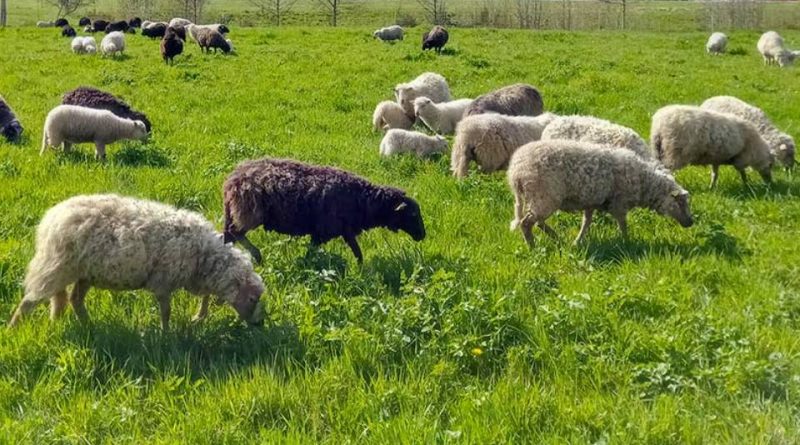Landes de Bretagne
Landes de Bretagne
The Landes de Bretagne is a sheep (Ovis aries Linnaeus, 1758) originally from France, with a main aptitude for meat production.
Systematics –
From a systematic point of view it belongs to:
Eukaryota domain,
Kingdom Animalia,
Phylum Chordata,
Mammalia class,
Order Artiodactyla,
Suborder Ruminantia,
Bovidae family,
Subfamily Caprinae,
Genus Ovis,
O. aries species,
Landes de Bretagne breed.
Geographic and Area Distribution –
The Landes de Bretagne sheep breed is a sheep of French origin that was once common in Western France. Today its diffusion and consistency has greatly diminished due to the almost total disappearance of the Landes de Bretagne. The phenomenon was due to the clearing of the moors of the Armorican Massif, especially around the middle of the 20th century, in conjunction with the expansion of agricultural surfaces, with the change in the cultivation of fodder and an incorrect reforestation which replaced the leafy trees with conifers.
Origins and History –
The Landes de Bretagne sheep breed is an ancient French breed that was once bred perfectly integrated into the transalpine landscape and territory.
This breed originated from the crossing of Flanders sheep and English breeds.
Even in the 19th and early 20th centuries this sheep was a common breed in western France.
The progressive intensification of agricultural production systems and forestry policies have progressively decreased the breeding of this breed so that in 2014 there were 1740 fertile females, divided among 180 farms. The almost total disappearance of the Landes de Bretagne was due, as mentioned, to the clearing of the moors of the Armorican massif, especially around the middle of the 20th century, in conjunction with the expansion of agricultural surfaces, of the forage revolution (1945-1970) and a reforestation policy that has tended to replace leafy trees with conifers.
Luckily in the eighties, when the Landes de Bretagne breed had almost disappeared that some teachers of the École Nationale Vétérinaire of Nantes, to safeguard this sheep, found a flock of them in Brière. In 2004, an association for the defense of the sheep of the Breton countryside was born.
Morphology –
The Landes de Bretagne is a small sheep measuring 50 to 60 centimeters at the withers, with a live weight of between 40 and 50 kilograms in the case of the female and between 50 and 65 in the case of the male.
It has a tapered head, generally without horns, while the fleece is today mostly white, although historically the black type prevailed (which could range from gray to very dark brown).
The extremities (head, limbs) often have spots and the fleece, which falls in long and smooth tufts, is mixed with a strong proportion of “jarre” (shorter and coarser hair).
The tail is long and bushy.
Productive attitude –
The Landes de Bretagne is a breed with an aptitude for meat production.
Lambs can be eaten from 6 months up to a little over a year. Although it is a breed raised mainly for meat and is used profitably to keep the landscape under control, its wool also lends itself to being valued in the form of fleece (thread, felt) or wool.
It is also a hardy and robust sheep, particularly suited to a harsh climate and outdoor rearing. This sheep can also live outdoors all year round, provided there is access to the fold. Otherwise, it will be enough to take the precaution of letting the flock stay indoors when winter temperatures drop below a certain threshold.
From the point of view of nutrition, it is considered an excellent herbaceous forage sheep as it is a breed able to effectively exploit the grass and has an excellent disposition for grazing in natural areas, even on difficult terrains such as heaths, areas marshy and fallow.
The female gives birth easily and the lambs are resistant, even if they grow slowly, a characteristic indicator of a particularly recognizable meat, red and tender with very fine streaks of fat, firm and extremely crumbly.
Guido Bissanti
Sources-
– Wikipedia, the free encyclopedia.
– Daniele Bigi, Alessio Zanon , 2010. Atlas of native breeds. Cattle, horses, sheep, goats, pigs reared in Italy, Edagricole-New Business Media, Bologna.

